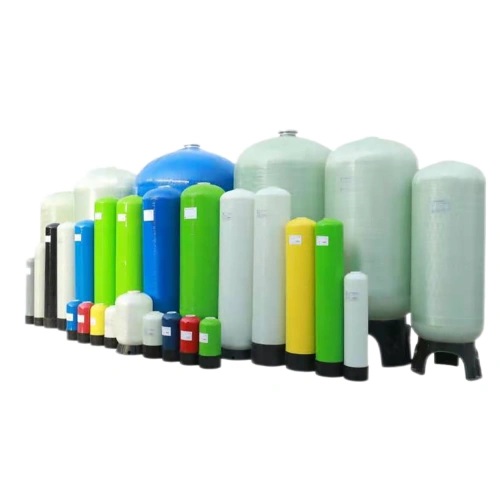
Considerations for Water Plant Valves Maintenance
Regular maintenance and inspection of valve components are crucial for ensuring optimal performance and efficiency in various types of plants, including power plants and treatment facilities. Over time, deposits may accumulate in valves, causing corrosion and damage, or leaks may develop, which can significantly impede their operation. To mitigate these problems, establishing regular inspection schedules is essential for successful valve maintenance.
A comprehensive maintenance program is necessary to extend the lifespan of control valves and prevent unexpected failures. This program should include regular inspections, cleaning, and lubrication of valve components. Furthermore, implementing predictive maintenance techniques, such as vibration analysis and acoustic monitoring, can help detect potential problems before they escalate into serious issues.
In addition, maintaining an organized inventory of specialized tools and adhering to maintenance schedules ensures reliable and effective valve repairs during pipeline maintenance operations. Preventive maintenance strategies play a pivotal role in extending valve life and ensuring the continuous operation of pipeline systems. By implementing these strategies, facilities can reduce the risk of unexpected failures and downtime costs. It is essential to train maintenance personnel in appropriate valve maintenance techniques to ensure that maintenance work is performed accurately and efficiently.
When selecting valves for renewable energy plants, it is important to consider operating conditions and long-term performance expectations. The unique requirements of sustainable energy infrastructure necessitate specialized valve solutions that balance initial investment with lifecycle value, emphasizing the need for meticulous maintenance practices to guarantee continuous operation throughout the plant’s lifespan.
Selecting the Right Materials and Design
The choice of valve material and design is a key factors that directly impact maintenance requirements and valve lifespan. In water treatment plants specifically, valves must be resistant to corrosive environments resulting from the chemicals used in treatment or the nature of the pumped water. For example, handling water with a high solids or salt content requires valves made of corrosion-resistant materials such as stainless steel or epoxy-coated cast iron.
The design must also have effective sealing capabilities to prevent leakage, as leaks not only waste resources but can also lead to accelerated wear of internal valve components. Designs such as ball valves or butterfly valves with durable rubber liners are often preferred for their ability to provide a tight seal and reduce the likelihood of frequent maintenance. A well-designed valve that allows easy access to wear parts also minimizes the time and effort required for inspection and repair.
Read also: The Role of Maintenance in Valve Health at a Water Treatment Plant
Case Studies
Water Treatment Plants
Water treatment plants are essential for providing safe and clean water to communities, relying heavily on various valves to regulate water flow throughout the treatment process. A case study of a wastewater treatment plant highlights the critical role of valve actuators. During a routine visit, an operator reported a malfunction in a valve actuator on a large gate valve, causing it to stop working and disrupting vital operations within the plant. This incident highlights the risks associated with valve actuator failure, underscoring the need for reliable solutions such as portable valve actuators to mitigate potential hazards and operational outages.
Power Generation Facilities
In the power generation sector, the selection of control valves is critical due to the complexity of the processes involved. A significant case study in this field reveals the importance of high-pressure valves that control steam flow through turbines. These valves are designed using high-temperature materials to ensure reliable operation while minimizing maintenance requirements. A well-designed control valve system allows power plants to respond quickly to changes in demand, effectively balancing the load and preventing overloading or underutilization of resources.
Regular valve maintenance is critical in power plants to maintain optimal performance. In one documented case, a power plant implemented a scheduled maintenance plan that included routine inspections and cleanings. This proactive approach helped identify potential problems before they escalated, ensuring smooth plant operation and extending valve lifespan.
Industrial Applications
Another notable case study involves the use of industrial water valves in various sectors, such as food and beverage processing and pharmaceutical manufacturing. Industrial water valves play a crucial role in regulating fluid flow through processing systems, highlighting their importance in maintaining operational efficiency and safety. Valve materials and designs are engineered to meet the specific requirements of these applications, ensuring compliance with industry standards while optimizing performance.
These case studies demonstrate that the type of plant—whether a water treatment facility or a power generation plant—significantly influences the valve types selected. Each application has unique operational requirements and safety considerations.
Regulatory Standards and Compliance
The selection of appropriate valves for various industrial applications is heavily influenced by the regulatory standards framework and compliance requirements. These regulations are essential to ensure safety, efficiency, and environmental protection in valve use across multiple sectors, including oil and gas, water treatment, and chemical processing.
Importance of Compliance
Compliance with industry standards is critical to minimizing the risks associated with valve failure. Standards, such as those developed by the International Organization for Standardization (ISO), provide a framework for regulating the use of industrial water valves.
The International Organization for Standardization (ISO), the American Petroleum Institute (API), and the American Society for Testing and Materials (ASTM) provide guidelines governing valve materials, design, and performance specifications. Adherence to these standards not only ensures legal compliance but also enhances the overall reliability and functionality of valve systems. Non-compliance can result in penalties and operational failures, underscoring the importance of strict adherence to these guidelines.
Major Standards Organizations
Several prominent organizations play a pivotal role in setting and enforcing valve manufacturing standards:
- ISO: Establishes international standards that promote safety and efficiency in valve use.
- API: Focuses on the oil and gas sector, offering over 700 standards to improve safety and operational efficiency.
- ASTM: Focuses on quality and performance standards for materials used across various industries.
- MSS: Ensures compatibility and operational compatibility within industrial systems through its valve manufacturing standards.
In addition, industry-specific standards, such as ASHRAE, ASME, and NFPA, define requirements tailored to different applications and environments, promoting regulatory compliance across all sectors.
Environmental Considerations
The selection of valve materials must consider their environmental impact. Compliance with regulations often mandates the use of sustainable and recyclable materials, reflecting the industry’s growing focus on minimizing environmental footprints. For example, ISO standards address emissions standards, which are becoming increasingly important in industrial applications, guiding manufacturers toward environmentally friendly practices.
Long-Term Costs vs. Initial Purchase Price
The initial purchase price of valves is a crucial factor in the selection process. However, it should not overshadow the importance of compliance with standards, which can impact long-term costs. Low-cost valves may seem attractive initially, but they can lead to higher maintenance and operating costs due to durability issues.
In contrast, high-quality valves that meet stringent standards tend to offer significant long-term savings by reducing maintenance requirements and improving reliability, supporting a comprehensive cost-benefit analysis.
Common Valve Types in Water Treatment Plants
Water treatment and distribution plants require a variety of valves that serve specific functions, from isolating components to precisely controlling flow and pressure. Understanding common valve types is crucial for determining the specific maintenance requirements of each.
- Gate Valves: Primarily used for isolation, they are either fully open or fully closed. They offer low flow resistance when open, minimizing pressure loss. However, they are not recommended for partial flow control (throttling) as this can cause rapid wear on the disc and seat. Maintenance requires periodic inspection of the valve stem and packing gland.
- Butterfly Valves: A popular choice for stop and flow control applications in large-diameter water systems, they are lightweight, compact, easy to operate, and responsive. Maintenance often requires checking the integrity of the rubber liner/seat to ensure there are no leaks, especially since they are susceptible to wear if the liner quality is poor.
- Ball Valves: Widely used in treatment plants for rapid start and stop operation. They provide a very tight seal with only a quarter turn. Despite their durability, maintenance may require replacing the seat gaskets, especially if exposed to aggressive chemical fluids.
- Control Valves: These valves are crucial for regulating pressure and flow to maintain optimal operating conditions. They require more complex maintenance due to the presence of actuators and precision control components. Their calibration and sensitivity must be checked regularly to ensure system accuracy.
- Check Valves: Their primary function is to prevent backflow, protecting pumps and other equipment from damage. Maintenance requires ensuring that the disc or hinge operates freely and that the valve closes completely once the flow stops, preventing water hammer.
Understanding these differences in design and function is fundamental to developing effective maintenance schedules that target the specific vulnerabilities of each valve type.
See dedicated article on the importance of maintaining PVC union-type valves.

























